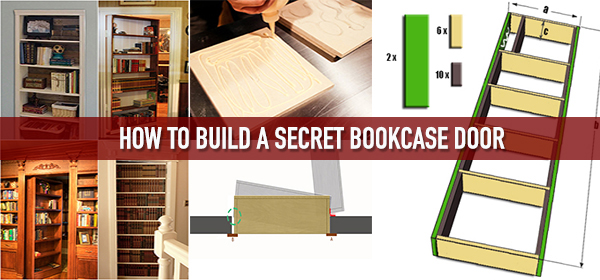
I think that the idea of building a safe room with a secret bookcase door was long ago inoculated in my mind … probably when I was a child.
But now I find it more practical than ever. My food reserves, water, my AR-15, my ammo and other things are finally stored properly without anyone suspecting it. On top of that it’s nice to know that in a crisis I have a place to hide in case I’m outgunned by looters. Although, this is probably not the best example. It’s just nice to have a hideout for you, for a loved one or for something you value.
Choosing the perfect spot for your safe room and for your secret bookcase door
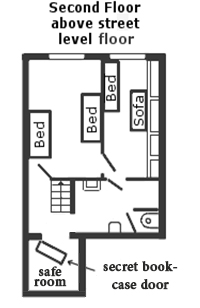 Make sure to spend as much time as needed on this project, don’t rush things since the result will be much more satisfying if you’re careful and do everything properly. Just take a look right now and examine your house. My advice is to pick a small spot that already has 3 or 2 walls, so you won’t have to build them yourself. Many houses have small spaces which we don’t really use, except for depositing useless things.
Make sure to spend as much time as needed on this project, don’t rush things since the result will be much more satisfying if you’re careful and do everything properly. Just take a look right now and examine your house. My advice is to pick a small spot that already has 3 or 2 walls, so you won’t have to build them yourself. Many houses have small spaces which we don’t really use, except for depositing useless things.
Be aware that your safe room should have NO windows. First, because one may spot the window from the outside and the “inexistence” of the window from the inside. So your hideout would be compromised. And second, because it’s a much better and cooler place to stockpile food and other goods.
Having no windows means you want to pick a spot with a light source but with the switch on the inside. Otherwise your safe room would also be compromised. If you don’t find such a spot the next best thing is to find one with a socket so you may plug in a lamp. If you don’t find even this kind of space in your house then just store a flashlight and a couple of batteries in your safe room.
The opening mechanism
A common mistake people do when building a secret bookcase door is not taking into consideration the opening mechanism.
A bookcase door is much heavier than one may think. So swinging on regular butt hinges will almost surely be a problem. Regular hinges will always sag! There are a few strong hinges specially designed for bookcase secret doors that can support a weight of 154 lbs. (2 hinges). A bit pricy given the fact that one hinge costs around $100.
Another good choice is to swing the bookcase door above the baseboard and hang it on a center-hung pivot hinge, also especially designed for hidden bookcase doors. Still pricy… around $140. Either way around, if you want to have a truly invisible bookcase door, the opening mechanism will cost you something.
I used two heavy duty invisible hinges for this project. The only reason is that they’re easier to mount.

As you may see, when the bookcase door opens the left corner of the bookcase will hit the wall if you don’t leave a space between them. I masked this space with a board fixed to the wall (B). The right board (A) will be fixed to the bookcase. Another part of the frame is an upper board, fixed to the wall.
Choosing the wood and cutting the boards for the secret bookcase door
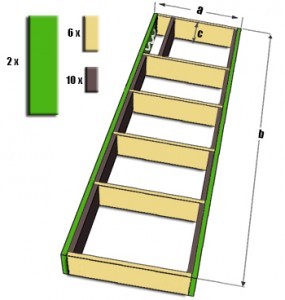 Traditionally, bookcases are made with solid wood boards. But sawn lumber is expensive. Plywood that has a hardwood veneer is not only less expensive but in many cases stronger than solid softwoods like pine. Birch (especially if you plan to paint the bookcase), maple, and oak plywood are good choices. If you also find these too expensive you may use high quality particle boards.
Traditionally, bookcases are made with solid wood boards. But sawn lumber is expensive. Plywood that has a hardwood veneer is not only less expensive but in many cases stronger than solid softwoods like pine. Birch (especially if you plan to paint the bookcase), maple, and oak plywood are good choices. If you also find these too expensive you may use high quality particle boards.
First, measure and record the height, width, and depth of the entrance to your secret room. On top of that we have to take into consideration the thickness of the boards and the gap between the wall and the bookcase door.
To simplify this we will note the height of the entrance with “b”, the depth of the bookcase with “c” (I made it twice the thickness of the walls), the thickness of the boards with “d” (typically ¾”), and the width of the entrance minus the space (left space) with “a”.
The two large side boards have to be cut b inches length and c inches width.
The shelf boards should be cut (a-2xd) inches length with c inches width. And the supporting boards should be cut (b – 6xd)/5 inches length with c inches width.
On top of that you need a board (b length, a width) for the back of the bookcase. Since the bookcase will be pretty heavy, I recommend a lightweight, thin board.
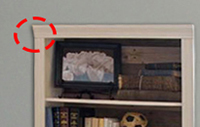 The frame is made of two long boards of exact same height (b-d inches) and the upper board (a + the width of the frame).
The frame is made of two long boards of exact same height (b-d inches) and the upper board (a + the width of the frame).
Usually frames merge diagonally, but this is not the case because the frame fixed to the bookcase would not open. Just like in this image the frames should connect horizontally.
Assembling the secret bookcase door
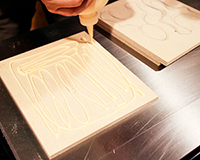
 First glue the supporting boards to the large sideboards. When you do this place a shelf board between them just to make sure you place the supporting boards correctly. Then glue the shelf boards. If you plan to fully fill the bookcase with heavy books, then think about screwing the boards together. I did it anyway, but in most cases is not even necessary. Nail the plywood back.
First glue the supporting boards to the large sideboards. When you do this place a shelf board between them just to make sure you place the supporting boards correctly. Then glue the shelf boards. If you plan to fully fill the bookcase with heavy books, then think about screwing the boards together. I did it anyway, but in most cases is not even necessary. Nail the plywood back.
Glue the left and upper part of the frame to the wall and the left one to the bookcase.
If you have a solid wall, like I have, the hinges can be placed directly in it. If not, you should probably use a center-hung pivot hinge.
If you do this correctly and pay attention to details when building the bookcase, the entrance to your safe room should be practically imperceptible. Here are four secret bookcase doors done using this method.
A panic room serves only one purpose: to protect you from different types of dangers.
Panic rooms can be quite elaborate. You don’t have to spend a lot of money or time building them. This is one of the things that I’ve learned from a well-known army vet Steve Walker, who is also a friend. Watch his video and learn quite a few interesting fast-tips about securing your home and protecting your family.
Post by Guest Writer: Claude Nelson